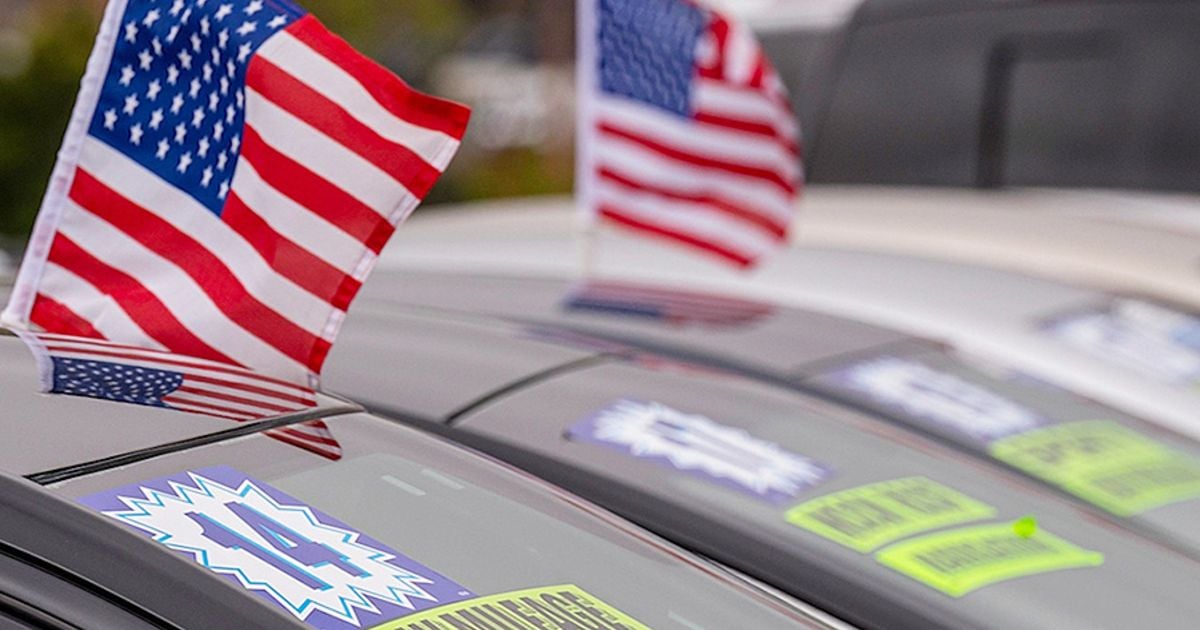
Used-vehicle sales in 2022 tumbled to their lowest numbers in nearly a decade, and used volume is poised to fall further this year if volatile economic conditions and consumers’ resulting affordability concerns continue to hamper the market.
The 2022 volume drop — a turnabout from a record 2021 — occurred even as wholesale used-vehicle prices were sliding for most of last year, according to data from Cox Automotive auction unit Manheim. And despite a slight recovery in those prices in December, Cox forecasters say wholesale prices are likely to continue to decline in 2023.
The number of used cars and trucks sold in the U.S. decreased nearly 11 percent to an estimated 36.2 million vehicles in 2022, Cox said Thursday. That is the lowest that figure has gone since 2013 when about 35.8 million were sold. Used-vehicle sales on the retail side fell, too, dropping nearly 10 percent to an estimated 19.1 million vehicles last year, the lowest retail performance since 2016, according to Cox. Exact figures for 2022 will be finalized in February after registration data for the year is fully in.
The declines indicate a market environment that has significantly changed since 2021, when robust demand and favorable economic conditions propelled used-vehicle sales to a record 40.6 million in total and 21.2 million at retail.
Total used-vehicle sales could drop to 35.6 million and retail used-vehicle sales to 18.9 million in 2023, according to a forecast published last week by Cox.
“Total used transactions and retail sales will likely be down another 1 percent, which is far better than 2022’s 10 percent decline, but still another leg down,” Cox Automotive Chief Economist Jonathan Smoke said Thursday.
Early indications show used-vehicle sales could be “muted” between January and the spring, according to Chris Frey, senior manager of economic and industry insights at Cox Automotive. He said it is uncertain for now whether sales for that time frame will follow historical trends. In years past, retail used-vehicle sales have typically been bolstered by tax return season, when consumers have more cash on hand to spend on vehicles.
Frey said he is keeping his sales expectations in check for several reasons: Used-car prices are still inflated, interest rates are higher, fears of a recession abound, and consumers are no longer receiving stimulus checks like they were in 2021. Higher prices and lending costs are clearly taking a bite out of the shifting market, Frey said. Affordability, in particular, will “remain a challenge,” especially for subprime and lower-income buyers, he said.
Though Cox Automotive has reduced its used forecasts for 2023, it is not expecting the bottom to drop out of the used market, Frey said. However, according to Smoke, a weaker supply of nearly new vehicles will affect the market.
Wholesale used-vehicle prices are also predicted to drop through at least the first half of the year, though declines will likely not be as severe as those exhibited through much of 2022, Smoke said.
Wholesale prices ticked up 0.8 percent in December from November. They had been in a pattern of decline for nearly all of 2022. Even with the slight bump last months, prices were down a significant 15 percent at the end of December 2022 compared with December 2021, according to Cox Automotive, which publishes the Manheim Used Vehicle Value Index, a major indicator of pricing trends. The Manheim index hit its historic peak in December 2021 and January 2022.
Prices may fall another 6 percent through June if a disappointing tax refund season and peaking interest rates cause higher than normal depreciation to occur in the spring auto sales period, Smoke said.
By midyear, though, demand could stabilize and then improve as lower wholesale prices trickle through and create more affordable buying opportunities, Smoke said. If interest rate increases stop, that could cause consumers’ monthly payments to smooth out, too, he added.
Still, Smoke predicted wholesale prices could end 2023 down 4.3 percent from their December 2022 level.